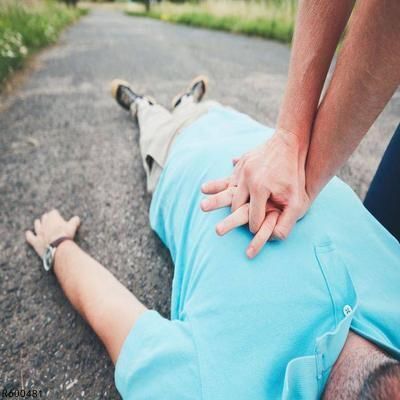
NO Circulation?
No Circulation is the term used in first aid when a person has stopped breathing. The heart is no longer pumping blood around the body.
There are many incidents or illness that may cause circulation to fail here are just a few.
- Obstructed airway
- Internal bleeding
- External bleeding
- Heart failure
- Stroke
- Head injuries
CPR for a adult (You have help available)
CPR-Non Breathing Adult
You have just completed your Primary Assessment:
You are on your own the casualty is not breathing.
1. You checked for danger
2. You checked for response
3. You shouted for help
4. You opened the airways
5. You checked breathing for 10 seconds
WHAT DO YOU DO NEXT ?
STEP 1
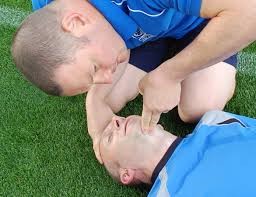
IMPORTANT!
Should help be available? it is important to send them to call for the emergency services as soon as NO! breathing is established.
AED!
Ensure that the location of your nearest AED is established and send someone to get it.
STEP 2
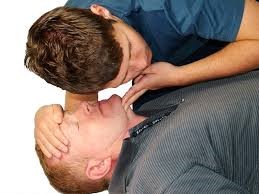
HEAD & CHIN TILT
Just before you commence CPR, you must ensure the airways are clear and the tongue is lifted off the back of the throat. You should have noticed if there is any objects/fluids in the area of the mouth. Consider a face shield/Pocket mask if blood or vomit is present. Tilt head to one side to allow fluids to flow freely, you may have to scoop any object from the casualty’s mouth
STEP 3
30 COMPRESSIONS
Give the casualty 30 compressions with 2 hands interlocked and placed in the centre of the chest. Compress to a depth of 5-6 cm and at a rate between 100 and 120 compressions per minute. Hand placement is important in CPR and should be taught in a class environment.
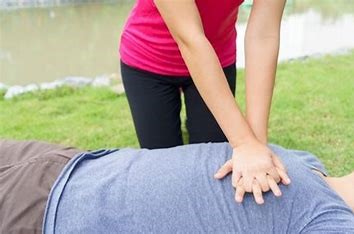
STEP 4
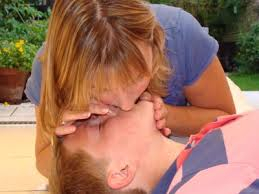
2 Rescue Breaths
Give the casualty 2 rescue breaths, mouth to mouth. Remember to pinch the nose to prevent air from escaping. Watch from the corner of your eyes to establish an effective rise and fall of the chest.
It is highly recommended that a pocket mask is used; CPR and mouth-to-mouth can be daunting experiences, and bodily fluids are commonly present. The pocket mask will give the first aider protection and deliver effective rescue breaths.
REPEAT
30 Compression’s
Give the casualty 30 compressions followed by 2 rescue breaths. If more than one person is present change over every 1-2 minutes to prevent the loss of effective CPR through fatigue.
CONTINUE
With
CPR!
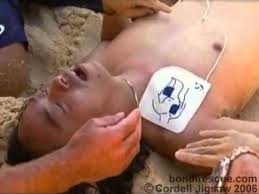
REMEMBER!
Once the AED arrives you must start to apply the pad immediately, good pad placement is essential.
The video below is a example on dealing with a adult in cardiac arrest.
